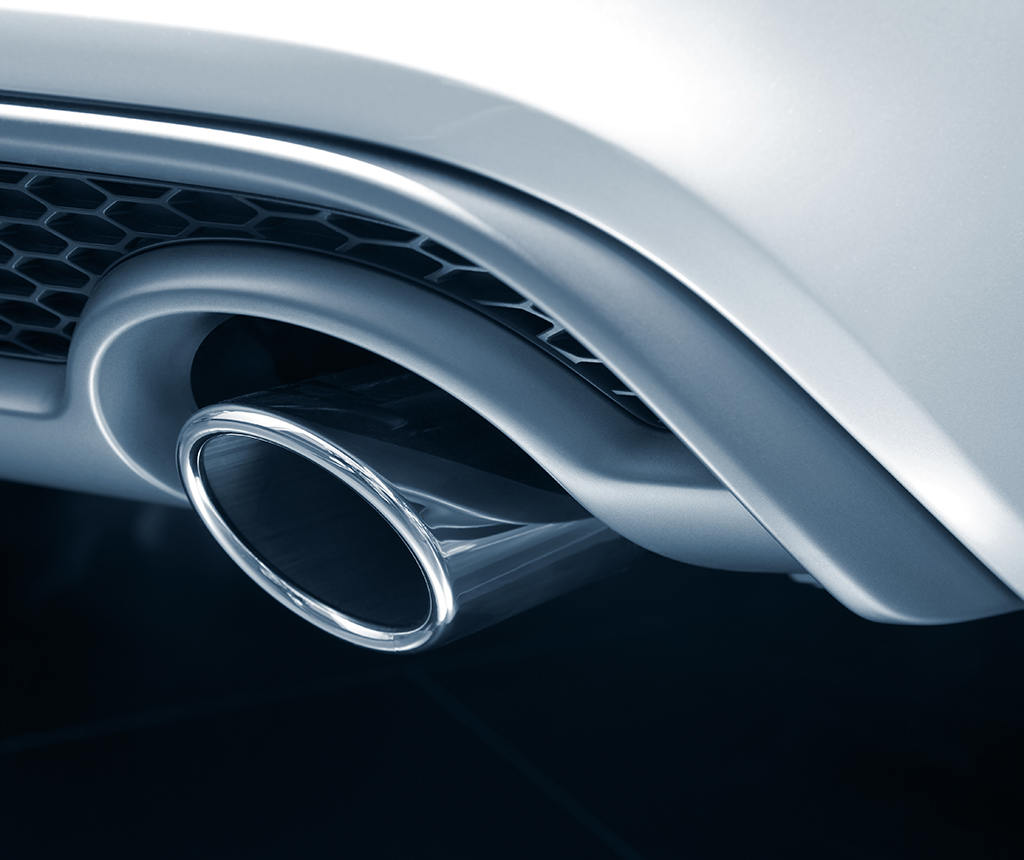What is a catalytic converter?
A catalytic converter lies between a car’s engine and its exhaust pipe. It contains catalysts to remove pollutants from the car’s engine, by converting them into harmless emissions. Catalytic converters help to clean the air we breathe, protecting us from health problems and our environment from smog, acid rain and pollution.
Catalytic converter catalysts: what do they do?
A ‘three-way catalytic converter’ (TWC) simultaneously removes three main compounds using reduction and oxidation reactions:
- Reduction of nitrogen oxides (NOx) to nitrogen – NOx may be nitrous oxide (NO) or nitrogen dioxide (NO2) gases which create smog and acid rain.
- Oxidation of carbon monoxide (CO) into carbon dioxide. Carbon monoxide is formed as fuel is combusted. It is a poisonous gas which can be lethal if inhaled.
- Oxidation of unburnt hydrocarbons (HC) into carbon dioxide and water. Hydrocarbons are harmful and can also create smog.
Catalytic converter chemistry: how do they work?
As their name suggests, catalytic converters contain catalysts. A catalyst works by helping a chemical reaction to take place faster. So, let’s look at what happens in a three-way catalytic converter for a gasoline engine.
Inside the catalytic converter are ceramic blocks, made up of thousands of micro-ducts like a honeycomb. This provides a high surface area for gases to pass over. But it’s the palladium-rhodium catalyst coated on the surface of the honeycomb that does the real work, undertaking the three main reactions simultaneously, i.e. NOx reduction and CO/HC oxidation.
- Carbon Monoxide (CO) → Carbon Dioxide (CO2)
- Hydrocarbons (HC) → Water (H2O)
- Oxides of Nitrogen (NOx) → Nitrogen (N2)
A three-way catalyst can cut CO, HC and NOx by over 99% if the air to fuel ratio is accurately controlled. Three-way catalysts will only give full conversion of each of these three pollutants in a gas stream containing a stoichiometric ratio (i.e. exact proportions needed for the reaction) of CO and NOx.
Three-way filter (TWF®)
More recently, we have seen the introduction of gasoline particulate filters in addition to the TWC; these are called three-way filters® (TWF). Particulate number legislation for gasoline direction injection vehicles has tightened. And our TWF technology can reduce gasoline particulate count by 95%. In a TWF, alternate ends of the honeycomb structure are blocked, forcing the exhaust through the wall of the catalyst containing honeycomb. So, in addition to the catalytic reaction, this traps the particulates which can then be burnt off to regenerate the filter.
Catalytic converter metals: leading the way in pgms
Johnson Matthey has a long history of expertise in platinum group metal (pgm) catalysts. We were instrumental in introducing the use of pgm catalysts in emission control technology, which car makers first started using back in 1974. Today, we continue to develop catalysts and materials to meet ever tightening legislation, remove particulates, and develop cold-start catalysts, providing even more protection for the planet.
Today, one in three vehicles globally contains a JM catalyst. And our products prevent 40 tonnes of pollutants from entering the air every minute of every day.




